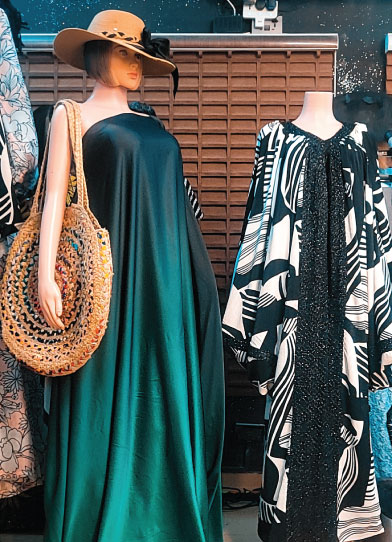Textiles/Fabrics
TYPE OF FABRICS THAT AKAN FASHION CAFE USES Sure! Fabrics come in a myriad of sizes and textures, each with unique qualities and uses.
Here are some details:
MEASUREMENTS Sizes OF FABRICS
Width: Fabric widths typically range from 36 inches (91 cm) to 60 inches (152 cm). For quilting, you often see 44 inches (112 cm) or 45 inches (114 cm) widths.
Length: Fabric is usually sold by the yard or meter, and you can buy as much as needed for your Customized sewing
Weight: The weight of fabric is often measured in grams per square meter (gsm) or ounces per square yard. This measurement can affect the fabric's feel and suitability for different projects. always communicate extensively for better understanding of the type you are choosing for your customized sewing
Textures African prints Ntoma or Ankara also known as kitenge in Swahili unique colorful and beautiful feel and easy on the skin preferably for summer and warm time
Cotton: Smooth, breathable, and soft. Great for everyday wear and home textiles.
Linen: Slightly rougher, natural texture. Very breathable and ideal for warm weather.
Silk: Smooth, glossy, and luxurious. Perfect for elegant garments and accessories.
Wool: Soft, warm, and often slightly fuzzy. Ideal for winter clothing.
Denim: Durable, sturdy, and slightly rough. Commonly used for jeans and casual wear. preferably for cold and warm
Velvet: Soft, plush, and luxurious. Often used in evening wear and upholstery.
Satin: Smooth and glossy on one side, dull on the other. Used for formal wear and lingerie.
Chiffon: Lightweight, sheer, and slightly rough. Often used for evening gowns and scarves.
Corduroy: Ribbed texture, soft but durable. Used for jackets, trousers, and upholstery.
Chantilly net lace soft stretchy translucent fabric Kente fabric is a vibrant and intricately woven textile originating from Ghana, specifically among the Ashanti and Ewe peoples. Kente fabric is not just a piece of cloth; it's a symbol of pride, history, and cultural identity for Ghanaians. Its vibrant colors and intricate patterns make it a stunning choice for various uses Here are some key details about Kente fabric:
Texture
Rich and Textured: Kente is known for its bold, colorful patterns and intricate designs, which are woven into the fabric, giving it a unique texture.
Smooth Base: The base fabric is usually smooth, making it comfortable to wear.
Patterns
Complex and Symbolic: Kente patterns are often symbolic, representing historical events, proverbs, or important cultural values. The designs are typically geometric and can include shapes like diamonds, rectangles, and zigzags.
Vibrant Colors: Kente is famous for its bright and bold colors, achieved through traditional dyeing techniques.
Uses
Cultural Significance: Kente is traditionally worn during important ceremonies and celebrations, such as weddings, festivals, and rites of passage.
Fashion: It's also popular in contemporary fashion, used in clothing, accessories, and even home Décor.
Maintenance
Careful Handling: Due to its intricate weaving, Kente should be handled with care. It's often recommended to dry-clean Kente garments to preserve their quality and appearance.
Brocade: is a luxurious, decorative fabric often made from silk or a silk blend, featuring intricate patterns. Here's a closer look at its characteristic Texture
Rich and Textured: Brocade has a raised, elaborate design that gives it a unique texture and a somewhat heavier feel compared to other fabrics.
Smooth Base: The base fabric is usually smooth and can vary in sheen, depending on the materials used (silk, polyester, or blends).
Patterns
Complex and Ornate: Brocade patterns are often floral, geometric, or include motifs such as leaves and scrolls. These patterns are woven into the fabric, not printed, which adds to the texture and richness.
Metallic Threads: Many brocades include metallic threads (gold or silver), which give the fabric a shimmering, opulent look.
Uses
Fashion: Often used for evening gowns, jackets, and costumes due to its luxurious appearance.
Home Decor: Commonly found in upholstery, draperies, and throw pillows for an elegant touch.
Maintenance
Delicate Care: Brocade should be dry-cleaned to maintain its intricate patterns and avoid damage.
If you're considering brocade for a project, it's a fantastic choice for creating a statement piece with a rich, elegant appeal!
Organdy also spelled organdie, is a lightweight, sheer, and crisp cotton fabric. Here are some key details about organdy:
Characteristics
Texture: Organdy is known for its stiff, crisp feel and slight sheen. It's often described as having a translucent quality, similar to silk organza. *Weave:* It's a plain-weave fabric, meaning the warp and weft threads are evenly spaced.
Finish: The fabric undergoes a process called "parchmentization," where it's treated with sulfuric acid to achieve its characteristic stiffness and sheerness.
Uses
Fashion: Organdy is popular for bridal gowns, blouses, and dresses due to its elegant and delicate appearance. It's also used for children's clothing, especially for special occasions like First Communion dresses.
Home Decor: It's used for curtains, table linens, and other decorative items because of its airy and ethereal quality.
Crafts: Organdy is often used in crafts and embellishments because its transparency allows for beautiful embroidery and decorations to stand out.
Maintenance
Care: Organdy should be handled with care. It's recommended to hand wash in cold water with a mild detergent, gently agitate without rubbing, and lay flat to dry.
Organdy fabric adds a touch of sophistication and elegance to any project, making it a versatile and timeless choice. Does this help with what you were looking for?

